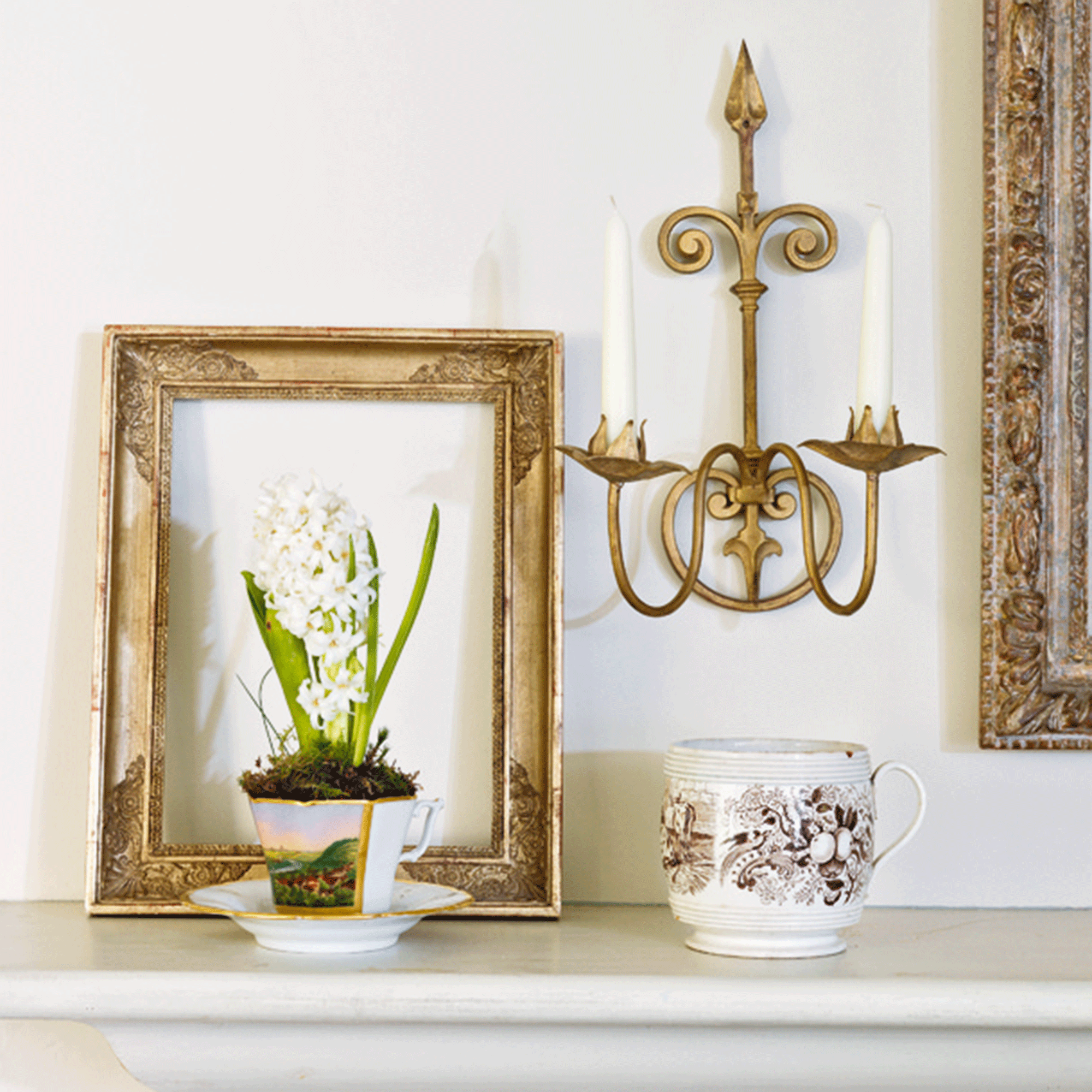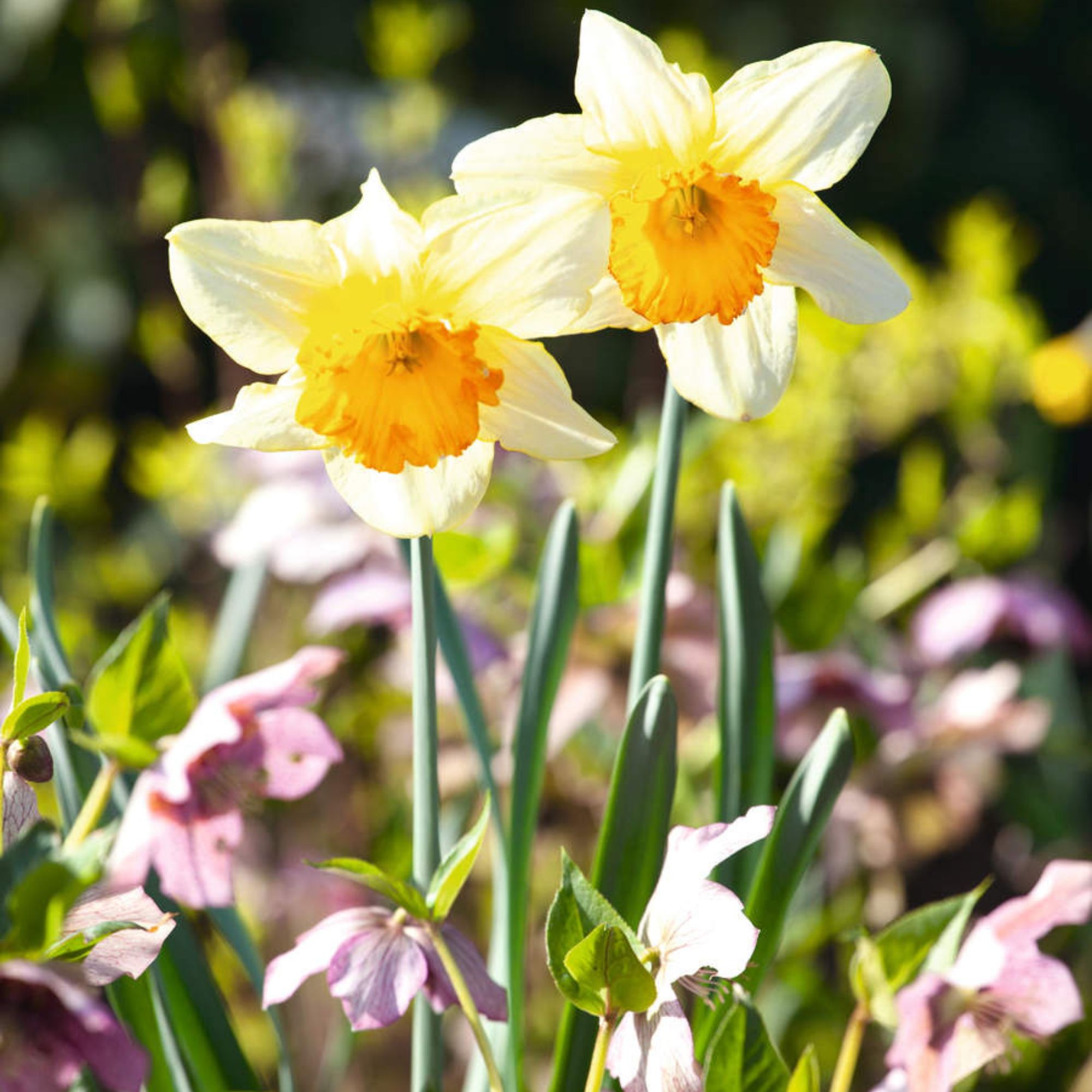
One of the very best things about spring is the fact that we can finally fill our homes with an array of spring plants, in a way that just isn’t as easily possible in winter. Whether it's planter displays of daffodils or forced hyacinth bulbs, we can't resist.
But equally, one of the saddest moments is when we have to wave goodbye to them when their blooming comes to an end.
However, one interior and gardening influencer, Rachel Howarth, revealed that there’s a clever and very easy trick for helping your indoor spring blooms to live on. In fact they will hopefully fill your garden border ideas with blooms for you to enjoy for years to come.
How to reuse indoor spring blooms as it warms up
Rachel Howarth, otherwise known as the_cottage_on_cow_lane on Instagram, shared a trick that she now relies on every time spring comes around, to allow her to make the most of the flowers within her home.
In the video – which has had hundreds of likes – she advises not binning your spring bulbs when they have finished flowering indoors. Instead, she encourages her followers to take them outside to the garden, and to the blooms in a spot of your choosing, to allow them to regrow.
To do this, she explains that it's important to cut off the flowers and let the leaves naturally die back.
Then, she reveals that they should grow back every year, so you can enjoy the same spring florals from inside your home in your outdoor space year-after-year! What a lovely way to reuse your indoor florals.
Plenty of Rachel's 10,000+ followers loved this tip, with one writing, 'Great advice - best way to add more and more to your garden each year'.
While another agreed, saying, 'Definitely do this ! Mine are on repeat from last year ! Great to see them again'.
Chris Bonnett, founder of GardeningExpress.co.uk, agreed that this is a fantastic hack for enjoying your florals to the fullest, saying, 'Planting your indoor spring blooms and cutting them back is a great way to enjoy them year after year.'
However, he did explain that there are a few caveats to ensure you bear in mind in order to get this trick right, and prevent lacklustre blooms from appearing as the years go by – such as planting for spring at the right time.
'We urge people to be cautious about doing this too early as it can weaken the bulb which will produce smaller blooms,' he says. 'Wait until your spring bulbs have truly finished flowering before taking them outside, and keep them in a warm yet sheltered spot where they won’t burn from the sun.'

He also suggests clever cutting to ensure this method of re-planting is done correctly. 'When cutting back, make sure to use clean, sharp tools to prevent any damage to the plant,' Chris advises.
Royal gardener and gardening expert Jack Stooks (speaking on behalf of Alt Index) also warned that while this trick will work with most of your favourite spring flowers, there is one variant that may not produce the best results.
'This trick does work with most of the spring flowering plants that are bought into the house, however, tulips can be touch and go as they are bred to be at their best in one season.
'They might do well one year, but the second year, they might not do as well – so while you shouldn’t discard them, their blooms may not be as plentiful as other types of flowers,' he says.
'However, most other plants do well when they are planted into the garden, so you will get year after year of colour with this hack.'







